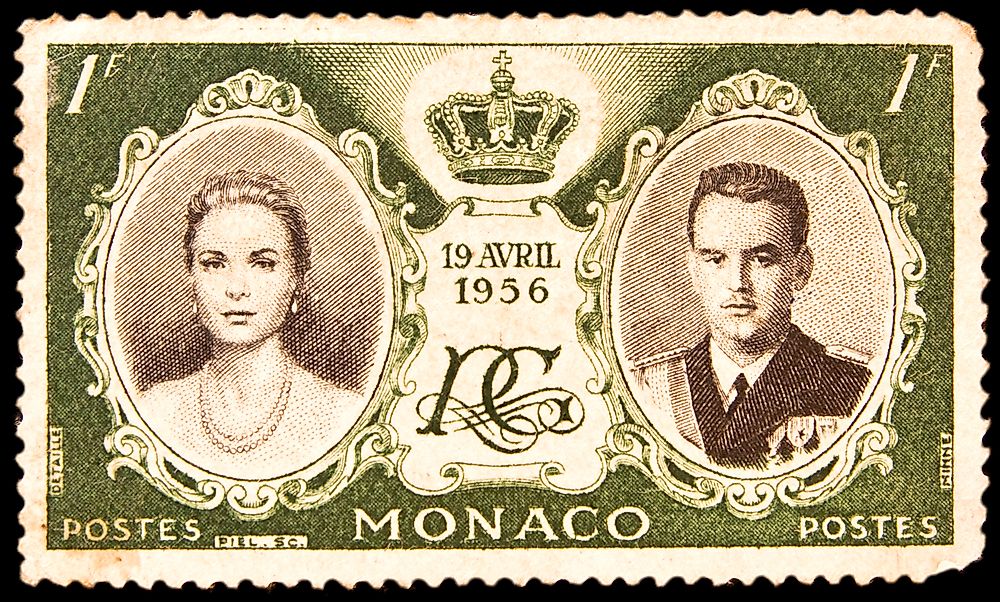Grace Kelly - Figures Throughout History

Grace Patricia Kelly popularly known as Grace Kelly was a popular American actress who married Prince Rainier III of Monaco and became the Princess of Monaco and was thereafter referred to as Princess Grace of Monaco. She became popular in the 1950's after starring in several films including Dial M for Murder and the Country Girl (1954), To Catch a Thief (1955), and The Swan (1956).
5. Early Life
Grace Patricia Kelly was born on November 12, 1929, in Philadelphia, Pennsylvania to an Irish-American father and a German Immigrant Mother. Her father John B. Kelly Sr. owned a brickwork contracting business and was a three-time Olympic Gold medalist in sculling. He was a Democrat who had been nominated to vie as the city of Philadelphia mayor but lost the elections. During the Second World War, President Roosevelt appointed John B. Kelly the National Director of Physical Fitness. Her mother Margaret was an athletics coach at the University of Pennsylvania but chose to be a housewife after getting married. She attended the prestigious Ravenhill Catholic Academy but was fond of accompanying her sister and mother to social events where she modeled fashion. At the age of 12, she took up the lead role in the play Don’t Feed the Animals. In 1947 she graduated from Stevens School in Germantown, Northwest Philadelphia. Grace Kelly proved to be good in acting and dancing, but her low grades in mathematics prevented her from joining Bennington College.
4. Career
After failing to secure a spot at Bennington College, Kelly decided to try out a career in acting. Her parents initially disapproved the move while her elder sibling John described acting as "a slim cut above streetwalker." Her uncle George Kelly was a popular play writer and secured her a spot at the American Academy of Dramatic Arts. She took up roles in several screen plays before she made a breakthrough after taking up a role of Bethel Merriday in a television adaption of Sinclair Lewis’ novel by the same name. In 1951, she was featured in the film Fourteen Hours and was subsequently featured in shows produced by NBC and CBS. In 1952, she was approached by John Ford, a film director who worked for Metro-Goldwyn-Mayer. She agreed on a $850 weekly pay contract and flew to Nairobi to begin the production of the film Mogambo in 1953. She went ahead to star and feature in several films for the production house including the Country Girl, Dial M for Murder, The Bridges at Toko-Ri, and Rear Window. For her role in these films, Kelly received several awards including a Golden Globe Award for Best Supporting Actress for the film Mogambo and the Academy Award for Best Actress for the film The Country Girl.
3. Major Contributions
Grace Kelly is recognized among America’s greatest film stars. Despite not being able to join the college of her choice due to low grades in mathematics, she inspired many people when she became a successful actress. In 1952, she was invited to take a role in Fred Zinnemann's High Noon alongside Gary Cooper. In 1952, she played the role of Linda Nordley in the film Mogambo which earned her the Best Supporting Actress award and the Golden Globe Award for Best Supporting Actress. In 1954, she took up the role of a wealthy wife in Dial M for Murder. In the same year, Metro-Goldwyn-Mayer loaned her out to Paramount Pictures to star in the film the Bridges at Toko-Ri alongside William Holden. She also starred in the film the Country Girl as Georgie Elgin, the wife to the sick and alcoholic Bing Crosby. She received an Academy Award for Best Actress for her role in the film. In 1955 she outshone her immediate competitor Judy Garland to scope the Oscar award for the Best Actress in Motion Picture although a vast majority of those in attendance expected Judy Garland to win.
2. Challenges
In 1955, Grace headed a delegation of Americans to Cannes Film Festival and was later invited for a photo shoot by Prince Rainier III, the Prince of Monaco. The pair met, and thereafter the prince made several trips to the US where he proposed to her and the pair got married. Grace had to put her acting career on hold to focus on becoming the princess and a wife. Although film producers offered her several opportunities, public outcry in Monaco prevented her from being featured in any film. She had to give up her American citizenship and the Price banned the films she had featured in from being aired in Monaco to protect her privacy.
1. Death and Legacy
Kelly suffered a stroke on September 13, 1982, while driving from Roc Agel to Monaco with her daughter Stéphanie. She lost control of the vehicle which veered off of a cliff of a winding road and fell 120 foot. The paramedics arrived shortly afterwards and found her unconscious but alive, although in a critical condition. Although they were rushed to the hospital, Grace had suffered brain injuries, her thorax was severely damaged, she had a broken femur, and several internal injuries. The doctors at the Monaco hospital were unable to save her. Princess Grace Patricia Kelly was declared dead the following day at 10:55 p.m. at the age of 52 after the doctors advised Prince Rainier that she would not live without life support machines. She left a legacy that lives today, and her efforts are recognized. The Monaco hospital was renamed Princess Grace Hospital Centre while she received several foreign state honors for her role in philanthropy. Her requiem mass was held at the Saint Nicholas Cathedral, Monaco and she was buried at in the Grimaldi family vault. Her statue was erected in Princess Grace Rose Garden in Monaco while her childhood home in Philadelphia was designated the state historical landmark by the State of Philadelphia.











